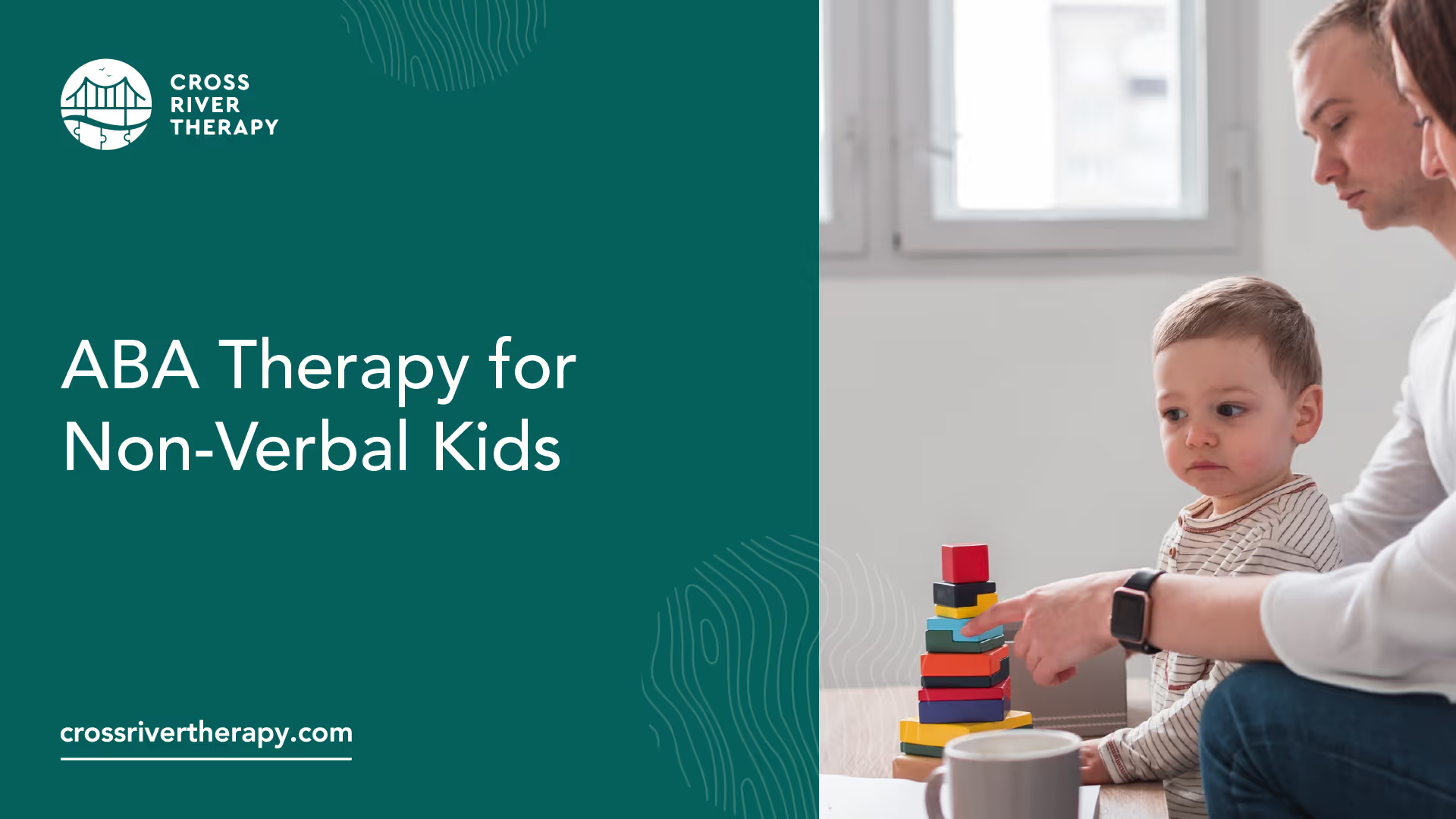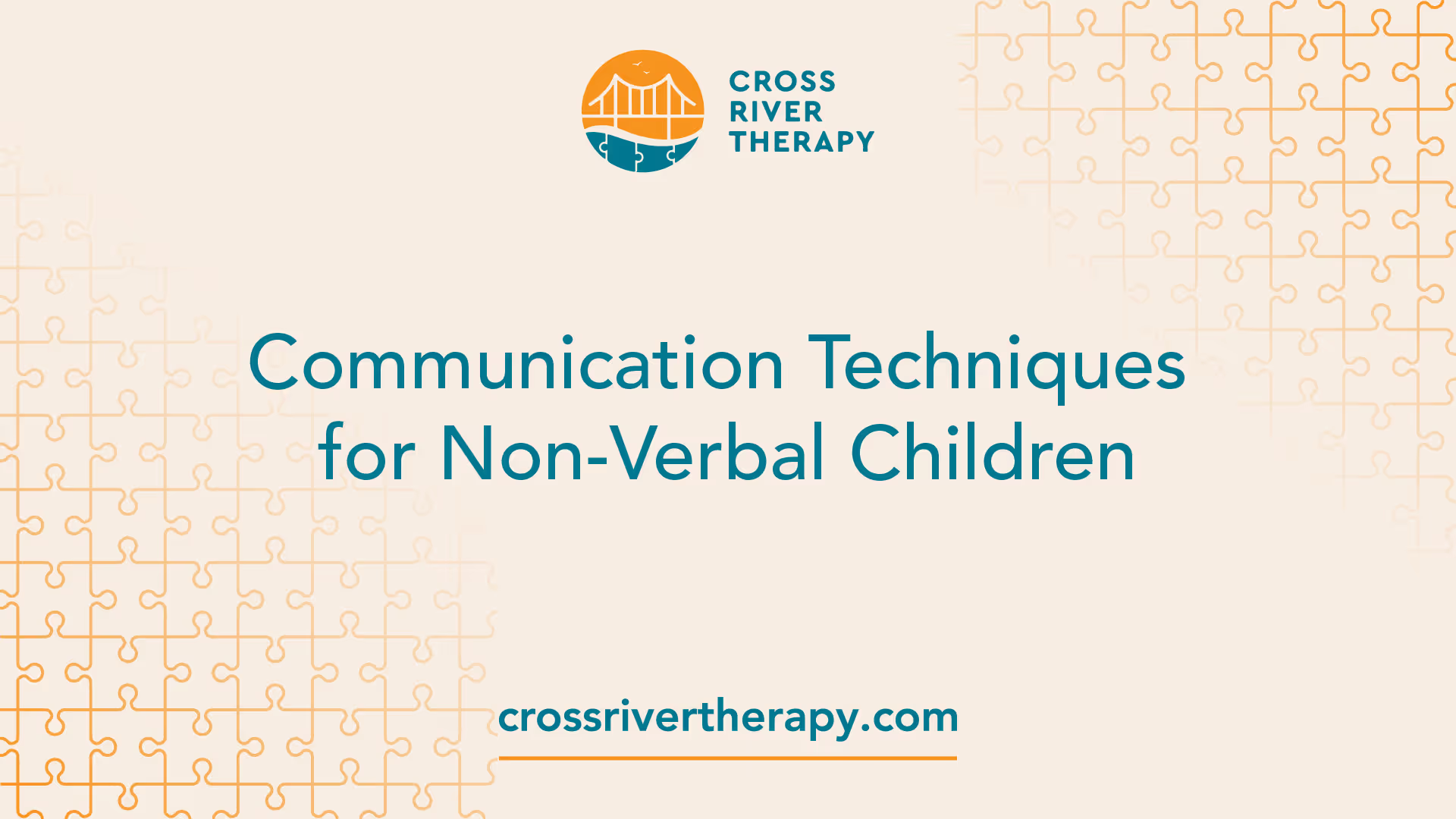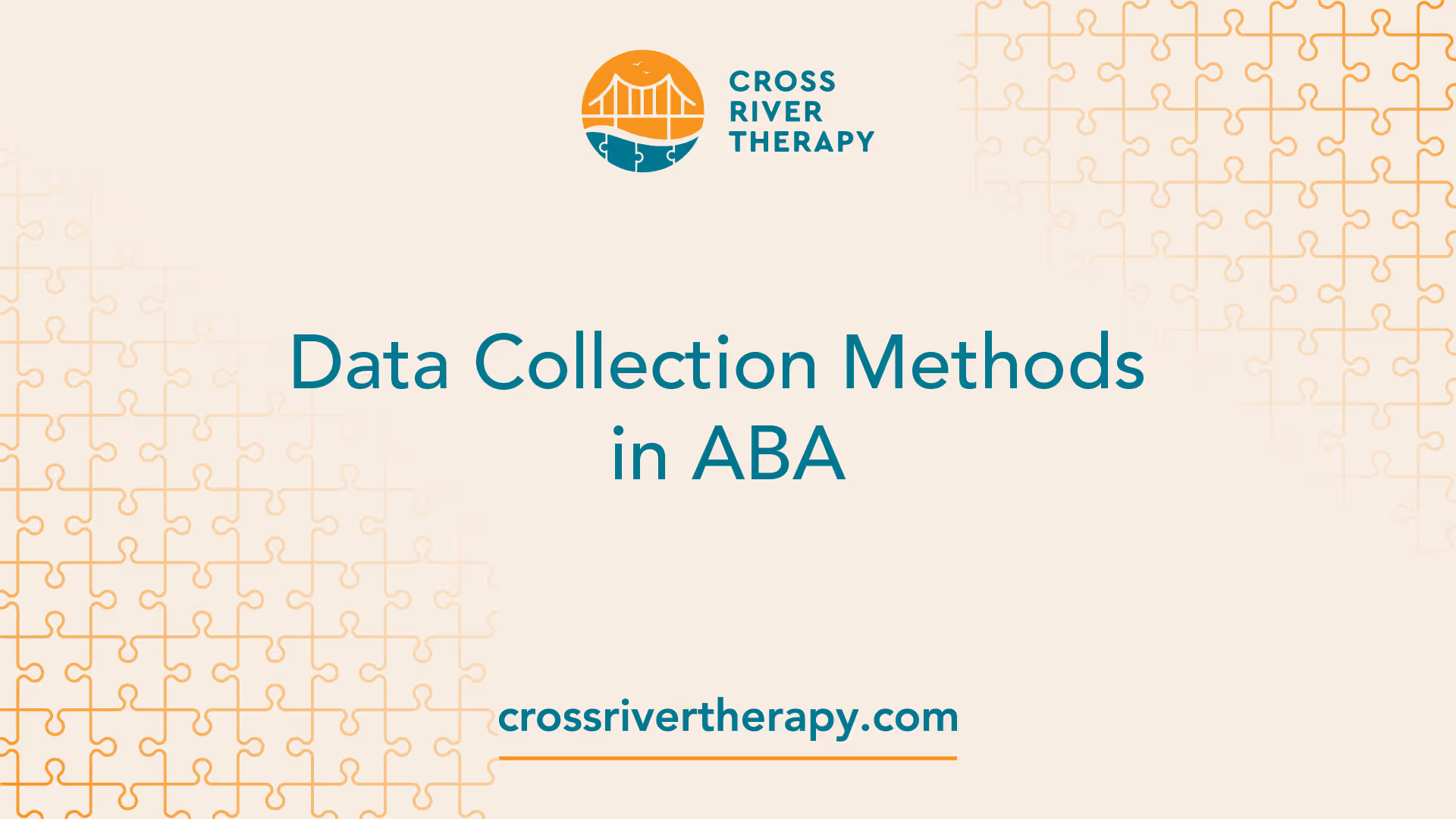ABA Therapy for Non-Verbal Kids
Discover effective communication techniques and personalized approaches.
Understanding ABA Therapy
Applied Behavior Analysis (ABA) therapy is a widely recognized and effective approach in supporting children diagnosed with autism, particularly those who are non-verbal. This therapeutic intervention focuses on understanding and modifying behavior by applying principles of learning theory. ABA therapy is highly individualized, tailored to meet the unique needs and preferences of each child.

Importance of ABA Therapy
ABA therapy plays a crucial role in helping non-verbal children with autism develop essential communication and social skills. By breaking down complex skills into smaller, manageable steps, ABA therapy enables children to learn and acquire new behaviors effectively. It provides a structured and supportive environment that promotes positive reinforcement and reduces challenging behaviors, improving overall quality of life for both the child and their family.
ABA therapy is known for its flexibility, allowing therapists to tailor interventions to address specific needs and preferences. This individualized approach ensures that each child receives the most effective and appropriate therapy for their unique circumstances. ABA therapy has been endorsed by respected organizations like the American Psychiatric Association and the American Psychological Association as an evidence-based treatment for individuals with autism.
Components of ABA Therapy
ABA therapy consists of several key components that work together to support the development of non-verbal children with autism. These components include:
- Assessment and Goal Setting: A thorough assessment is conducted to identify the child's strengths, weaknesses, and areas for improvement. Based on this assessment, specific goals are established to guide the therapy process. These goals are individualized and tailored to address the unique needs of each child.
- Data Collection and Analysis: A crucial aspect of ABA therapy is collecting and analyzing data to understand the function of behaviors, create hypotheses, and develop intervention strategies. This data-driven approach helps measure progress, identify patterns, and make informed decisions to guide the therapy process.
- Therapist-Child Interaction: ABA therapy typically involves one-on-one interactions between the therapist and the child. These interactions focus on teaching and reinforcing desired behaviors while systematically addressing challenging behaviors. The therapist utilizes various techniques and strategies to promote skill acquisition and reduce problem behaviors.
- Positive Reinforcement: A core principle of ABA therapy is the use of positive reinforcement. This involves rewarding desired behaviors to increase their frequency and likelihood of recurrence. By providing meaningful rewards and praise, therapists motivate children to learn and engage in positive behaviors.
- Generalization and Maintenance: ABA therapy aims to ensure that skills learned in therapy generalize to real-life situations and are maintained over time. Therapists work with the child and their family to facilitate the transfer of skills to various settings and promote independence and functional abilities.
By understanding the importance of ABA therapy and its key components, parents of non-verbal children with autism can make informed decisions about their child's therapy journey. ABA therapy offers a structured and evidence-based approach to help children develop essential communication skills and improve their overall quality of life.
Communication Techniques for Non-Verbal Children
When it comes to ABA therapy for non-verbal children, it's essential to focus on teaching various forms of communication beyond simple one-word requests. While requesting is an important aspect of communication, real communication involves more than just asking for things. It's crucial to go beyond the basics and teach additional communication skills to these children, such as teaching rejection.

Teaching Beyond One-Word Requests
Teaching non-verbal children to communicate goes beyond requesting. It involves teaching them to express their needs, wants, and preferences in various contexts. This includes manding for attention, manding for removal of aversive events/situations, manding for actions/locations, and manding for information. By expanding their communication repertoire, non-verbal children can effectively express themselves and interact with others.
Instead of solely focusing on teaching one-word requests, ABA therapy aims to encourage non-verbal children to use a range of communication methods. This can include using sounds, gestures, pictures, or even speech. The therapy utilizes techniques such as Discrete Trial Training (DTT) to teach sounds and words, with an emphasis on encouraging the child to start using desired actions. Through positive reinforcement and visual aids like pictures, children are motivated to communicate and gradually expand their communication skills.
Importance of Teaching Rejection
Teaching rejection is an essential component of communication training for non-verbal children. By teaching them to communicate what they don't want, non-verbal children can effectively express their preferences and avoid potential behavior problems. The ability to reject unwanted items, activities, or requests empowers non-verbal children to have control over their environment and promotes their autonomy.
When non-verbal children can communicate their rejection, it helps caregivers and therapists understand their preferences and avoid potential conflicts or frustrations. This aspect of communication training is powerful in promoting positive behavior and reducing challenging behaviors that may arise from a lack of effective communication.
By going beyond one-word requests and teaching rejection, ABA therapy provides non-verbal children with the tools to express themselves more effectively. Through various communication techniques and personalized intervention, these children can develop the skills necessary to communicate their needs, wants, and preferences. It is important to remember that ABA therapy is a flexible therapy that is adapted for each child, designed based on their individual needs and preferences to provide positive reinforcement in activities they do on a daily basis. The effectiveness of ABA therapy has been endorsed by renowned organizations and is supported by scientific evidence as an evidence-based treatment for individuals with autism.
Data Collection Methods in ABA
A crucial component of Applied Behavior Analysis (ABA) is collecting and analyzing data to understand the function of behaviors, create hypotheses, and develop intervention strategies. A variety of data collection methodologies exist to assist ABA professionals in leveraging continuous data collection to achieve positive changes, whether it is to decrease negative behaviors like tantrums and aggression, or increase positive behaviors such as socialization and sharing [2].

Duration Recording
Duration recording is a data collection method that involves measuring the length of time a specific behavior lasts. This method is particularly useful for benchmarking strategies, especially for behaviors that are too fast or too variable to count using other methods. By tracking the duration of behaviors, ABA professionals can monitor progress and determine whether interventions are effectively reducing or increasing the targeted behaviors.
Latency Recording
Latency recording is another valuable data collection method in ABA therapy. It involves measuring the time it takes for a behavior to occur after a verbal cue or an event. This method is especially useful for understanding the effectiveness of strategies aimed at correcting negative behaviors and promoting positive social change. By measuring the latency of behaviors, ABA professionals can assess how quickly a desired behavior occurs following a cue or event, allowing for targeted intervention and reinforcement.
ABC Data Collection Method
The ABC (Antecedent-Behavior-Consequence) data collection method is a comprehensive approach to understanding behavior. It involves taking note of the events that occur before a behavior (antecedent), the behavior itself, and the consequences of the behavior. By systematically documenting the antecedents and consequences associated with specific behaviors, ABA professionals can gain valuable insights into the cause and effect relationships underlying those behaviors. This information is crucial for formulating effective support plans and developing interventions tailored to address the specific needs of non-verbal children [2].
By utilizing data collection methods such as duration recording, latency recording, and the ABC data collection method, ABA professionals can gather meaningful information about behaviors exhibited by non-verbal children. This data serves as a foundation for developing individualized intervention strategies and monitoring progress over time. It enables ABA professionals to make data-driven decisions, optimize treatment plans, and help non-verbal children develop effective communication skills and achieve their full potential. For more information on ABA therapy techniques, you can refer to our article on ABA therapy techniques for beginners.
Individualized Communication Approaches
When it comes to teaching communication to non-verbal children, there are various approaches that can be used in ABA therapy. The decision on the most effective mode of communication, whether it's vocal, PECS (Picture Exchange Communication System), or sign language, is highly individualized and depends on factors such as the child's current communication skills, existing abilities, and caregiver preferences.
Vocal vs. PECS vs. Sign Language
Vocal communication involves teaching a child to use spoken words or vocalizations to express their needs, wants, and thoughts. This approach focuses on developing speech and language skills through various techniques such as imitation, shaping, and reinforcement. Vocal communication can be a goal for non-verbal children who have the potential to develop speech skills.
PECS, on the other hand, is a communication system that uses pictures or symbols to represent objects, actions, or concepts. The child learns to exchange these pictures with a communication partner to express their desires or make requests. PECS is particularly useful for non-verbal children who struggle with speech production but have good visual skills.
Sign language is another option for non-verbal children, where they learn to use manual signs to communicate their needs and thoughts. Sign language can be beneficial for children who have the motor skills to produce signs and are more visually oriented.
The choice between these communication approaches is based on the child's individual profile, including their learning style, motor skills, and overall communication abilities. It's important to work closely with a qualified ABA therapist to determine the most suitable approach for your child.
Factors Influencing Communication Mode
Several factors can influence the selection of a communication mode for non-verbal children. Here are some key considerations:
- Child's Abilities and Preferences: The child's existing communication skills and preferences play a significant role in determining the most appropriate mode. Some children may show an affinity for vocalizing, while others may be more comfortable with using pictures or signs.
- Motor Skills: Motor skills are crucial when considering communication modes. Vocal communication requires coordination of the speech muscles, while PECS requires the ability to manipulate and exchange pictures. Sign language relies on fine motor skills for producing manual signs.
- Cognitive Abilities: The child's cognitive abilities, such as their understanding of symbols or abstract concepts, can influence the effectiveness of different communication modes. Some children may find it easier to grasp the concept of pictures, while others may show a natural inclination towards sign language.
- Environmental Factors: Consideration should be given to the child's environment, including the availability of support and resources for a specific communication mode. For example, if the child will primarily interact with individuals who are fluent in sign language, it may be more beneficial to focus on sign language as the primary mode of communication.
Remember, ABA therapy is a highly individualized approach, and the communication mode chosen for a non-verbal child should align with their unique needs and abilities. It's essential to work closely with a qualified ABA therapist who can assess and guide the selection and implementation of the most suitable communication approach for your child's progress and success.
To learn more about how to implement ABA therapy at home and explore success stories, visit our articles on how to implement ABA therapy at home? and ABA therapy success stories.
Effectiveness of ABA Therapy
ABA therapy has proven to be highly effective in improving the lives of non-verbal children with autism. Let's explore the impact of ABA therapy on IQ and communication skills, as well as the success rates and scientific backing of this treatment approach.
Impact on IQ and Communication Skills
Research has consistently shown that ABA therapy leads to significant improvements in IQ and communication skills for children with Autism Spectrum Disorder. Intensive ABA therapy has been associated with a remarkable increase in skill levels, with some children achieving levels equal to their peers.
A study conducted by O. Ivar Lovass, Ph.D., in 1987 demonstrated that through intensive ABA therapy, 90% of individuals substantially improved and 47% of the children in the study developed skill levels equal to peers. Another study by Sallows and Graupner in 2005 indicated that approximately 50% of individuals with autism who receive ABA services before the age of four show a significant increase in IQ, verbal skills, and social functioning.
Furthermore, a meta-analysis conducted by Virués-Ortega in 2010 found that ABA interventions implemented in early childhood resulted in positive medium to large effects in language development, intellectual functioning, acquisition of daily living skills, and social functioning for individuals diagnosed with ASD.
Success Rates and Scientific Backing
ABA therapy has shown remarkable success rates for individuals with autism, with rates upwards of 90%. This therapy approach utilizes techniques such as discrete trial training modeling, the Picture Exchange Communication System (PECS), and reinforcement systems to effectively target and address the specific needs of each child.
Numerous renowned organizations, including the American Psychiatric Association and the American Psychological Association, have endorsed ABA therapy as a valid evidence-based treatment for individuals with autism.
Scientific research and studies have consistently supported the effectiveness of ABA therapy in improving the lives of non-verbal children with autism. The University of California at Los Angeles (UCLA) Young Autism Project, for example, demonstrated that 47% of children who participated in an ABA treatment reached normal intellectual and educational functioning compared to only 2% of a control group. This study was based on a model that involved intensive one-to-one intervention for 40 hours per week over the span of 2-3 years.
With its proven effectiveness and scientific backing, ABA therapy provides hope and tangible results for non-verbal children with autism. The individualized nature of this therapy approach allows for tailored interventions that address the unique needs of each child, leading to significant improvements in communication skills, IQ, and overall quality of life.
ABA Therapy Beyond Autism
While ABA therapy is commonly associated with Autism Spectrum Disorder (ASD), its benefits extend beyond autism. This evidence-based therapy can be effective for children with various cognitive disorders, behavioral problems, developmental delays, and injuries or diseases affecting cognition and behavior, even without an autism diagnosis. It's important to note that coverage for ABA therapy without an autism diagnosis may vary from state to state.
Applications for Cognitive Disorders
ABA therapy can be a valuable intervention for children with cognitive disorders. For example, children with Traumatic Brain Injury (TBI) can benefit from ABA therapy by modifying behaviors related to aggression, anxiety, lack of motivation, or defiance. Additionally, ABA therapy can help TBI patients relearn social skills and basic tasks, improving their overall quality of life.
Benefits for Oppositional Defiant Disorder
Oppositional Defiant Disorder (ODD) is a behavioral disorder characterized by a pattern of defiant and disobedient behavior. ABA therapy can be beneficial for children with ODD by conditioning them to act in healthier ways and discouraging negative behaviors associated with the disorder. ABA therapists use praise and rewards to reinforce desired behaviors instead of punishment, promoting positive behavior change and improving the child's interactions with others.
ABA therapy is a flexible and individualized therapy that is adapted to meet the specific needs and preferences of each child. By providing positive reinforcement in daily activities, ABA therapy helps strengthen positive behaviors and decrease negative behaviors across a range of cognitive disorders and behavioral challenges. The effectiveness of ABA therapy for each individual client is measured through skills assessment, data collection on responses, and frequent reviews by a Board Certified Behavior Analyst (BCBA). Renowned organizations, including the American Psychiatric Association and the American Psychological Association, endorse ABA therapy as a valid evidence-based treatment for individuals with autism and other conditions.
By recognizing the broader applications of ABA therapy, parents can explore its potential benefits for their children with various cognitive disorders and behavioral challenges. Consulting with a qualified ABA therapist can provide further guidance and insights tailored to the specific needs of the child.
References
[1]: https://acornhealth.com/blog/a-guide-to-applied-behavior-analysis-therapy-for-children-with-autism/
[2]: https://accupointmed.com/measuring-behavior-seven-aba-data-collection-methods/
[3]: https://www.iloveaba.com/2012/05/teaching-non-verbal-children-to.html
[4]: https://www.atamic-canada.com/post/how-aba-works-on-non-verbal-children
[5]: https://www.ncbi.nlm.nih.gov/pmc/articles/PMC9458805/
[6]: https://www.appliedbehavioranalysisedu.org/2021/11/aba-for-non-autistic-children/



